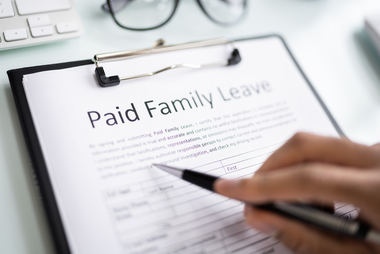
Common FMLA Mistakes to Avoid
 Officially called the Family and Medical Leave Act, the FMLA is a federal law that makes it a requirement for employers with at least 50 employees to offer unpaid though job-protected leave to any and all eligible employees.
Officially called the Family and Medical Leave Act, the FMLA is a federal law that makes it a requirement for employers with at least 50 employees to offer unpaid though job-protected leave to any and all eligible employees.
There are certainly a number of nuances involved with the FMLA, including what this looks like when it comes to covering employees, the approved reasons as to why employees are permitted to take FMLA-covered leave and the process of requesting as well as approving leave under the FMLA.
According to an SHRM article, it has been shown that “legal experts say the [FMLA] law is full of traps that can snag employers that let their guard down.” Below are a few mistakes to watch out for when working within the guidelines of the FMLA.
Not following the FMLA’s notice requirements
Under the FMLA, employers are required to provide their employees with crucial notices regarding the FMLA, including the following:
- A general notice about the FMLA.
- A notice that informs employees of their status regarding eligibility in addition to their FMLA rights and responsibilities.
- A notice telling employees whether a certain type of leave qualifies under the FMLA as well as how much time the employee is allotted within the FMLA leave that said employee is entitled to receive.
Improper handling of FMLA recertifications
If desired, you can require employees who submit requests for FMLA leave, whether for caregiving or recuperation purposes, to also submit valid certification from a medical professional that clearly states the reason behind the request for leave.
Once an employee’s FMLA leave request is approved, employers should ask the individual employees for additional medical certification if necessary. However, these types of restrictions are time-sensitive, so employers need to handle them as carefully and diligently as possible.
Failing to notify employees of their eligibility for FMLA leave
For an employee to qualify for FMLA leave, said employee must adhere to these three requirements:
- Have been an employee with your company for at least 12 months within the past seven years.
- Have worked at least 1,250 hours within the past 12 months.
- Have worked at a location that is within 75 miles of 50 employees, at a minimum, who work for your company.
Although this information can be a challenge to keep track of — not to mention apply to a situation — employers are required to notify both current and rehired employees as soon as they are eligible for FMLA-approved leave. An excellent way of ensuring that you are on top of notifying employees when they become eligible for FMLA leave is by implementing reputable HR software.
Additional dangers
- Lacking an official FMLA policy. A documented policy is key to an organized and consistent FMLA leave process.
- Hiring silent managers. It can be dangerous to employ managers who end up failing to promptly inform the HR department that an employee is out on extended FMLA leave.
- Employing untrained managers. Examples include managers who illegally punish employees for taking FMLA leave, discourage employees from requesting Family and Medical Leave Act leave or ask employees to submit prohibited medical information.
- Failing to take FMLA abuse seriously. According to experts, the FMLA is regarded as a minefield in the context of employee abuse. In order to combat the increased potential for abuse, it is wise to request medical certification and documentation.
- Not implementing adequate administration. The proper administration of paid leave taken for FMLA leave purposes is critical.
- Experiencing reinstatement issues. With the exception of specific and limited cases, it is imperative that, upon returning to work after taking an FMLA-approved leave, employees are reinstated to the positions they held prior to their FMLA leave. While this is important, a few potential problems may arise if employers try to reinstate any qualifying employee to a different position, postpone the employee’s reinstatement altogether or simply fail to reinstate the employee’s benefits upon his or her return to work.
Ultimately, employers should ensure that they consider additional laws, such as applicable state, family or medical leave laws, when determining the FMLA eligibility of employees. As an employer, make it a priority to work with qualified professionals who can ensure that, as a business, you are in compliance with FMLA obligations.



